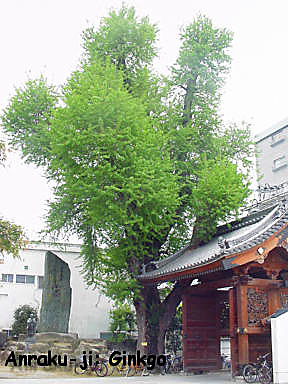Thursday, May 13, 2010
Jam
Our home among the gum trees,
has lots of plum trees.
So I made jam. Dark is normal plum, orange is blood plum.
It passed the time while waiting for baby to come, and gave me something to do other than blog or write papers. Got a better way to procrastinate?
Posted by
C W Magee
at
2:56 PM
1 comments
![]()
Labels: Feast
Sunday, May 09, 2010
I'm a sheltered geologist
A while back, I was talking to some geologists, whose first language is not English, and who do a lot of work in Africa. They were concentrating on the corner of geologic region X, which spanned three countries. I knew why they avoided the second country, so I asked about the third.
"Oh, the access is very difficult. There are many mines there."
"Mines? If they're mining, shouldn't that make doing geology easier?" I asked in my naive white-boy way.
They just looked at me like I was the dumbest lump on the planet.
"No, no. Not mining. Land mines."
Sometimes I can be a real moron.
Posted by
C W Magee
at
10:08 PM
5
comments
![]()
Labels: Tricks for young players
Friday, May 07, 2010
Where on (Google) Earth #203

I'll be honest: I don't know a thing about this place. Back when WoGE was young and I was competative about it, I teed up a whole bunch of potential spots to use so that I wouldn't have to waste time looking for a new spot. I thought this looked neat, so saved the picture. I did not write down the location. So get cracking folks, and if you know what creates this bizarre landform, please tell the rest of us. Schott rule is in effect, and winners list is at:
http://ron.outcrop.org/kml/WoGE.kmz
Posted by
C W Magee
at
9:29 PM
10
comments
![]()
Labels: Where on (Google)Earth?
Thursday, May 06, 2010
Shade for the cockroaches
The Ginkgo tree is one of the few things admired by scientists and crackpots alike. I will let the crackpots explain their love for the tree, while I haven’t tried it, I suspect that Googling Ginkgo hippy dippy quackery would get you pointed in the right direction.
Scientists like the ginkgo because it is a living fossil. It is the last remaining species of a gymnosperm division that flourished in the Jurassic, before the rise of flowering plants, birds, mammals, or lumberjacks. As the competition set in and the diversity of the ginkgo family dwindled, this last remaining species soldiered on. 200 million years after its debut, the tree, native to Eastern China, can now be found in urban environments all over the world. It is a popular decorative tree, particularly in far Eastern cultures such as that of China and Japan.
You don’t outlive a dinosaur without being tough. But I never realized just how tough until I found this webpage, courtesy of commenters at Jules & James blog. It describes a number of Ginkgo trees that were growing in Hiroshima when the atomic bomb was dropped. The tress described here were all between 1 and 2 km from ground zero. They were burned by the blast, torn apart by the shockwave and irradiated by the fallout. But it takes more than a nuclear weapon to kill a ginkgo. And a month after the attack, they resprouted. The trees are still alive today.
I don’t what sort of Mesozoic catastrophe forced these trees to evolve the ability to survive nuclear war. But survive they did, and I think that’s pretty cool. Even if we humans end up blasting ourselvels off the planet, and the only animals left are the cockroaches, at least they will have some shade. Not to mention the herbal supplements.
Posted by
C W Magee
at
9:38 PM
2
comments
![]()
Labels: Natural and synthetic disasters, Worth leaving the lounge
Saturday, May 01, 2010
Putting the Gulf oil spill in perspective
The MSM and the blogosphere have reached a feverish pitch reporting this week's oil spill in the Gulf of Mexico. While it is still too early to say what the end result will be, here are some previous oil apocalyptic scenarios that the doom-sayers seem to have forgotten.
Over the past 50 years, oil production in the Niger delta has resulted in spills estimated to have exceeded one million tonnes (~7 million barrels) in total. The result has been widespread chronic illness, environmental degradation to tropical rainforest and mangrove habitat, and severe social unrest.
During the 1991 Gulf war, Iraq set fire to all of Kuwait's oil wells and spilled close to a million tonnes of oil into the Persian Gulf, partially as a deterrent to amphibious assault. Following the war, they drained most of the Tigris-Euphrates wetlands in order to destroy the culture of the Marsh Arabs, who opposed Saddam Hussein.
In 1979 the Ixtoc exploratory well in Mexico blew out, spilling close to half a million tonnes of oil into the Gulf of Mexico.
In the 2006 Israel-Lebannon conflict, Israel bombed the Jiyeh power station, resulting in a spill of 20-30 thousands tonnes, and coating over a hundred kilometers of coastline with oil.
I'm assuming everyone knows about the 40,000 tonne Exxon Valdez spill.
In 2003 the Sea Empress spilled 70,000 tonnes of oil into an estuary in Wales. 200 km of coastline were contaminated.
The current estimate for the Gulf spill is around a thousand tonnes per week, although the uncertainty on this estimate is large.
Worldwide demand for oil is about 10 million tonnes per day. About one fifth of that is from the United States.
Posted by
C W Magee
at
10:22 PM
4
comments
![]()
Labels: Just sayin'

